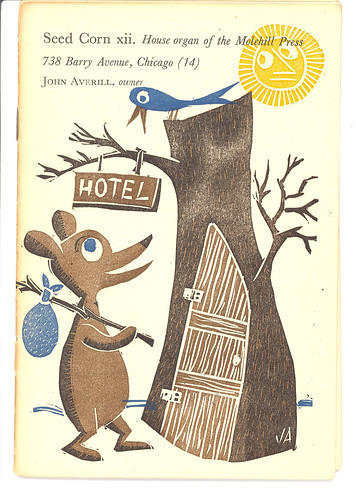 Anyone who uses and/or enjoys wood type should make at least one trip to Two Rivers, Wisconsin, to the Hamilton Wood Type & Printing Museum. At around the turn of the last century, they became the largest wood type manufacturer in America (the world?), and continued to produce wood type until 1984.
Anyone who uses and/or enjoys wood type should make at least one trip to Two Rivers, Wisconsin, to the Hamilton Wood Type & Printing Museum. At around the turn of the last century, they became the largest wood type manufacturer in America (the world?), and continued to produce wood type until 1984.After reading the history, I can imagine that Edward Hamilton took on the production of wood type as a challenge to come up with the most efficient methods to manufacture the type (though I may be a tad type-focused - I am sure there were many opportunities for innovative thinkers and tinkerers in the pre/post Civil War Midwest, when everything was booming). When he first started out making wood type in a back room in his mother's house, he opted for an inexpensive method, but as he built a customer base, expanded and absorbed other type companies, he switched to cutting type out of sturdier material (maple instead of the holly wood letters mounted on pine blocks that Hamilton produced originally – I wonder if there was any correlation between the type of wood that was available around Two Rivers and Hamilton's choice of materials) and created methods of production, including unique machinery, to more efficiently produce the wood blocks.
Touring the museum’s display of how type was produced is awesome. The machinery is big and heavy-looking, and I imagine it was quite noisy and hot and sawdust-y when it was running, planing and sanding and cutting (and punching) blocks to be carved into type. And before the factory was electrified, all of machinery was originally run from one steam engine -- the machinery was attached to really large rotors (I guess?) that spanned the factory floor (at the ceiling level) by such things as canvas bands, and when the bands were engaged with the rotors, the machinery ran.
Hamilton went on to also produce type cabinets, office furniture, steel furnishings for medical/dental offices and laboratories, the first clothes dryer, among many other things. These days, the focus of the company is laboratory furnishings, I believe (mainly using steel for fabrication, instead of wood).
And then there’s the wood type. It is a visual and tactile pleasure palace, if that’s your thing. Fortunately, if you have the skills (to use the type) and the time to do it, you can get your hands all over a lot of stuff that you’ve never seen before in person, and may never see again. It is a living museum, meaning printers can keep the history and type alive by using it. Photographs will never do it justice (though I continue to try!), only ink does, and it would take quite a while to exhaust the collections at the museum expressing their full beauty on paper.
Check out this flickr group: http://www.flickr.com/groups/hamiltonwoodtypemuseum/
Join the fan club on Facebook: http://www.facebook.com/group.php?gid=91084745476&ref=mf












